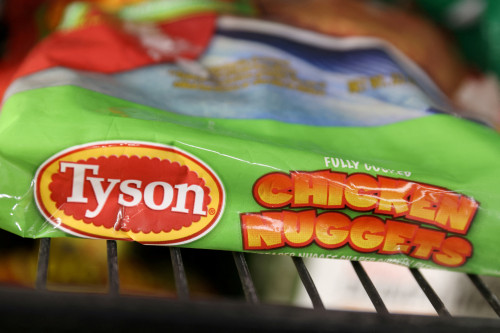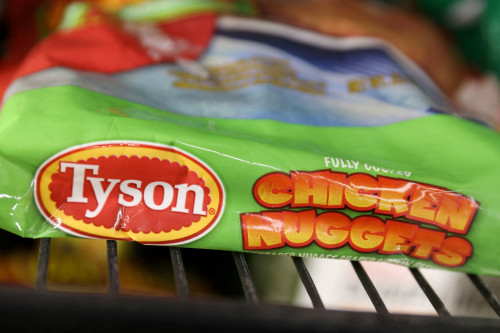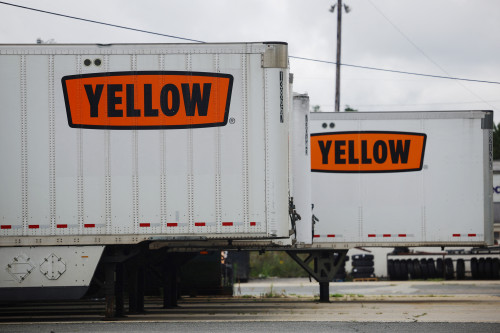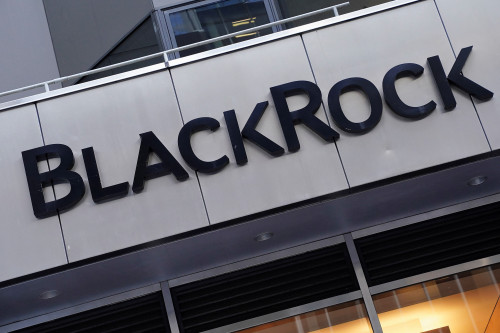
By Tom Polansek and Neil J Kanatt
(Reuters) -Tyson Foods raised its annual revenue forecast and reported better-than-expected quarterly earnings on Monday as consumers’ increased appetite for chicken helped offset steep losses in its beef business.
Shares rallied 4% after dropping on Friday to their lowest level since February 14 amid pressure from a nationwide cattle shortage.
The herd dwindled to its smallest size on record this summer after a years-long drought dried up pastures used for grazing, forcing meat companies like Tyson to pay more to buy cattle to slaughter. Tight supplies also drove beef prices to record highs this year in a blow to consumers.
However, Tyson benefited in the quarter that ended on June 28 from increased sales volumes and prices for its chicken. Chicken remains a more affordable protein compared to beef and pork, CFRA analyst Arun Sundaram said.
Quarterly profit margins jumped for Tyson’s chicken business, along with its pork and prepared foods units, compared to a year earlier.
“The only soft spot in our business is the beef segment,” CEO Donnie King said.
Tyson expects fiscal 2025 revenue to grow 2% to 3%, compared with its prior forecast of flat-to-up 1%.
The company raised its annual income outlook for the chicken business to between $1.3 billion and $1.4 billion from its previous forecast of $1 billion to $1.3 billion. Its beef business is now expected to lose $375 million to $475 million, though, compared with a previous estimate of $200 million to $400 million in losses.
King said ranchers likely started the process of rebuilding the cattle herd by keeping female cows, known as heifers, on farms for breeding. Supplies will remain tight because it takes roughly two years to raise full-grown cattle.
Tyson reduced processing line speeds at beef plants due to low supplies in the meantime, said Brady Stewart, who oversees the company’s beef business.
“We like that strategy moving forward,” he said.
Quarterly volumes in Tyson’s beef business fell 3.1%, but sales grew 6.9% as prices jumped 10%.
The segment had an adjusted operating loss of $151 million, including a goodwill impairment charge of $343 million. That compared with losses of $69 million a year earlier.
Quarterly chicken sales rose 3.5%, with volumes up 2.4%. Tyson permanently closed U.S. chicken plants that employed thousands of workers in recent years to increase efficiency.
“Tyson’s portfolio is leaning heavily on chicken,” said Alex Jarombek, senior analyst for research firm Consumer Edge.
The company’s total quarterly net sales increased 4% to $13.88 billion, beating analysts’ estimate of $13.56 billion, according to LSEG data. Tyson posted adjusted earnings per share of 91 cents, above the estimate for 78 cents.
(Reporting by Neil J Kanatt in Bengaluru and Tom Polansek in Chicago; Editing by Shilpi Majumdar and Nick Zieminski)







